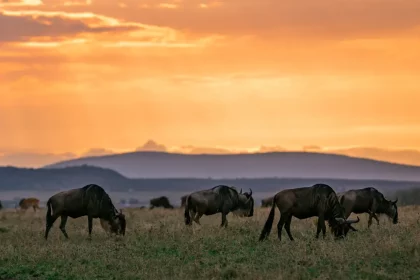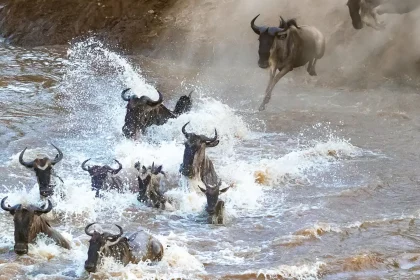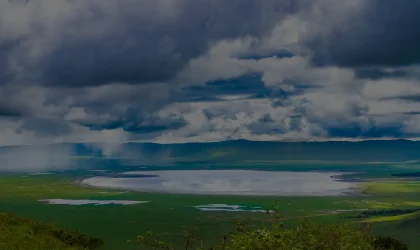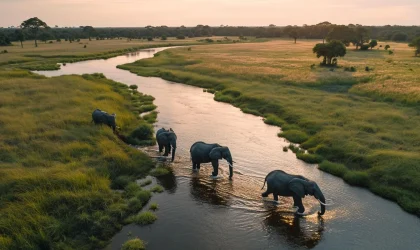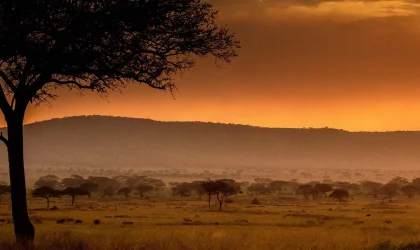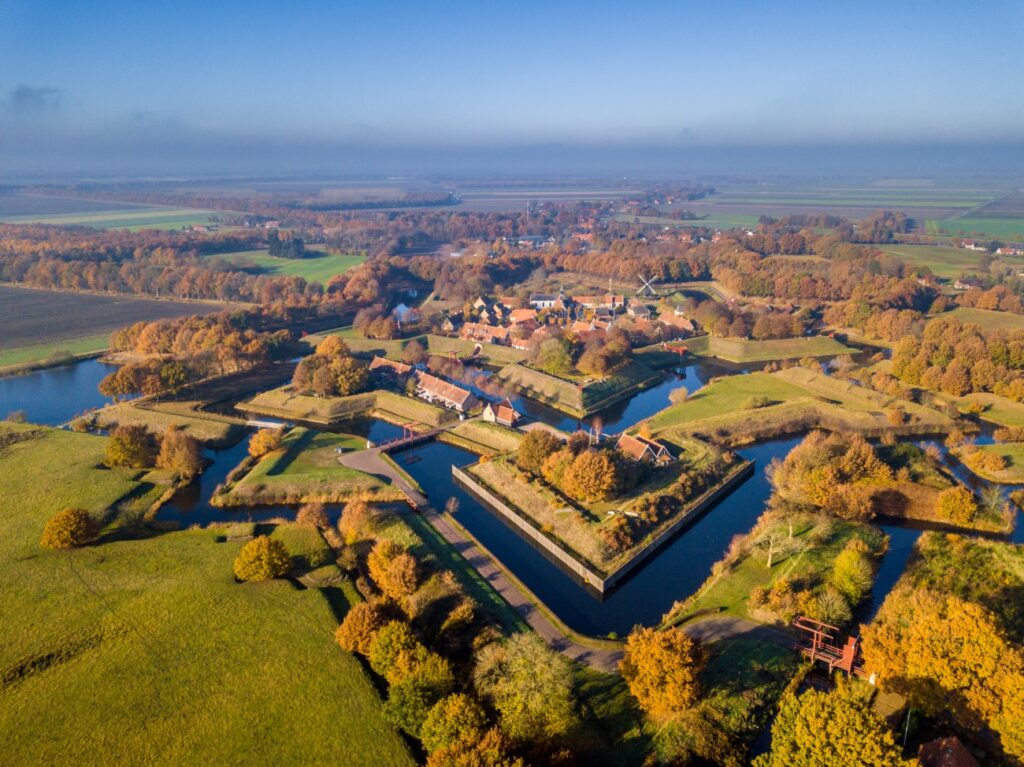
Where The Land Runs On Forever

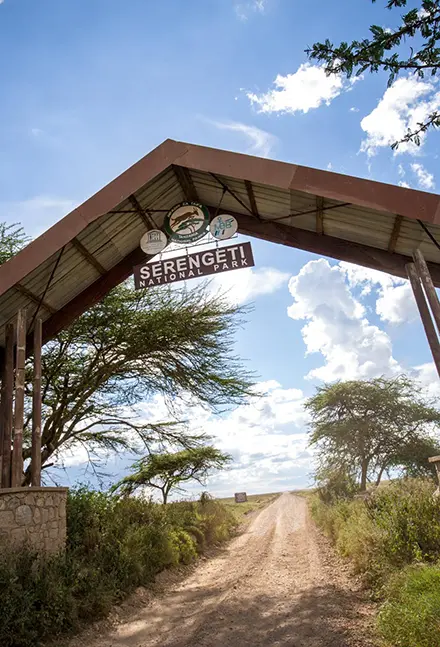
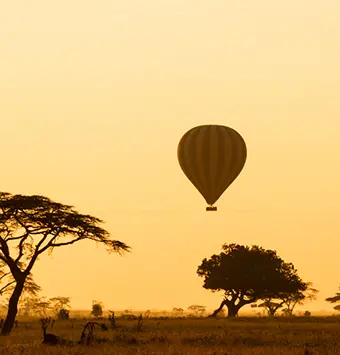
Legend has it that the word Serengeti emanates from the people who have occupied this pristine land for aeons–the Maasai. Roughly translated, it means the endless plains, or “the place where the land runs on forever”.
Proclaimed in 1952, and covering 14,763 km2 (5,700 sq mi) – an area larger than Connecticut or Montenegro – in the eastern Mara Region of northern Tanzania, the Serengeti National Park is revered by nature-lovers worldwide as one of the most populous wildlife destinations.
Stretching north to Kenya and bordering Lake Victoria to the West, the diverse habitats within make it the perfect home for creatures great and small. It is also cherished as a World Heritage Site, both for the wildlife it is home to and the abundant relics of prehistoric mankind.
As its name suggests, the overwhelming impression given by the Serengeti is of vast, open spaces dotted with granite kopjes (rock outcrops), flat-topped acacia trees, and undulating grasslands.
Only two permanent rivers pass through the park, although numerous gullies rise in spate when good rains fall.
Closing your eyes, the serenade of Nature soothes the atavistic brain, while her various scents arouse the senses even further.
The near-pristine wilderness aside, Serengeti National Park is most famous for the prolific wildlife that roams the ancient plains. Huge herds of plains game, estimated at some 2 million ungulates, roam the various habitats; grazing, browsing and fertilizing the land they traverse.
The massive herbivorous biomass in turn provides ample hunting opportunities for Africa’s legendary large predators perpetuating the unceasing circle of life and death on the African plains. Here too, visitors are blessed with myriad species of birds and plants–each adding to the awe of nature’s complexity and diversity.
By road, the Serengeti National Park is 335 km (208 mi) from Tanzania’s safari hub, Arusha. By air, seven airstrips service different regions of the park.
Serengeti National Park
Highlights
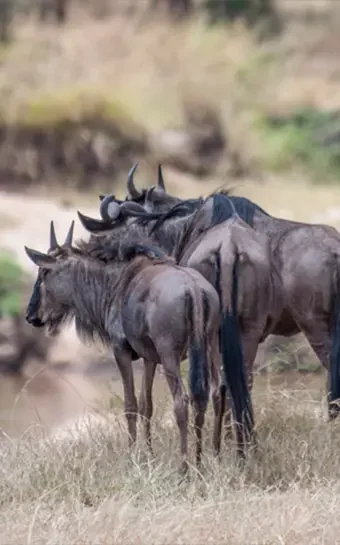
The Great Migration
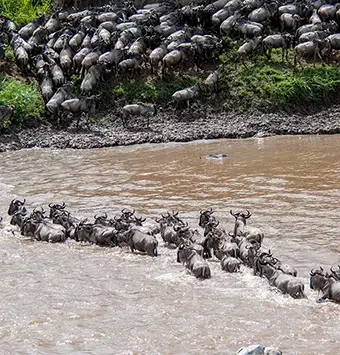
River Crossings
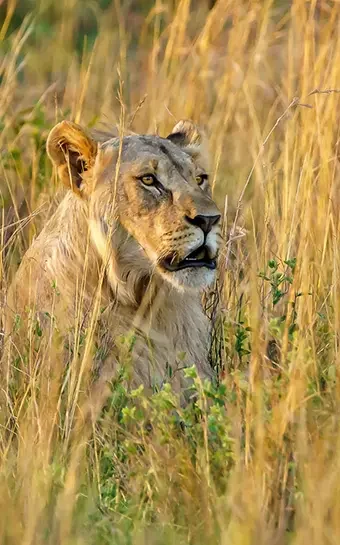
Predators
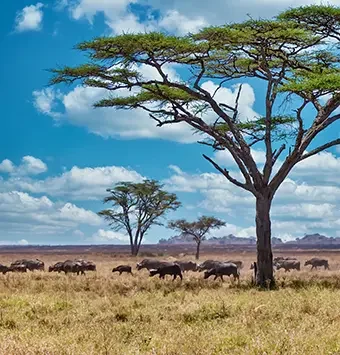
Pristine Habitats
Regions of the Serengeti
Exploring the Diverse Landscapes and Wildlife of the Serengeti: A Journey Through Its Regions
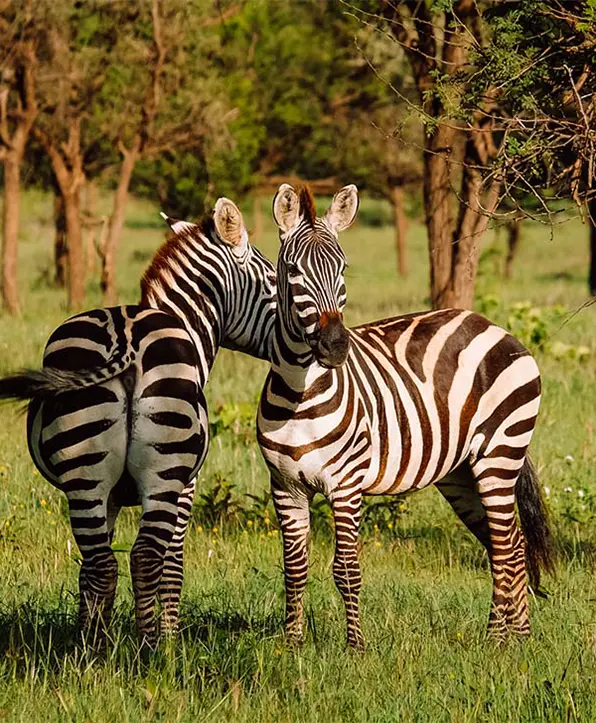

Central (Seronera) Serengeti
Also known as the Seronera Valley, this region is the location of many of Serengeti’s permanent lodges, and the main airstrip within the park. As such, the volume of tourists (and vehicles) in the area is typically high, particularly in the peak season. This can be a drawback when game viewing. The valley usually teems with wildlife, with herds of zebra, wildebeest, various antelope species, as well as elephants in abundance.
This in turn means there is a very good chance of sightings of the park’s large predators – lions, cheetahs and spotted hyenas. The Seronera region is commonly referred to as Africa’s Big Cat Capital and is said to be the best place within Serengeti to spot the elusive leopard.
The landscape is a gently undulating acacia (Vachellia sp.) savanna, where the game is easily viewed. The Great Migration typically moves through this area from April to June and October to December.
Western Corridor and Grumeti
Rated as one of the best places in the Serengeti to view the drama of the Great Migration, the so-called Western Corridor lies within the Kirawira region through which the Grumeti River flows.
The river is a key obstacle along the migration route that must be crossed between May and July, to get to better grazing. Not only do the occasionally swift waters carry away the weak, but the river is also home to dozens of huge crocodiles that gorge themselves at this time.
Even once across the river, the danger continues as land predators await. Outside the crossing periods, this is a relatively quiet corner of the national park. Various habitats including riverine, floodplains, woodlands and savanna, make up the landscape of this vast valley that leads to Lake Victoria.
It is the only place in Serengeti to view colobus monkeys and kongoni antelope, and marked by forests and thickets of dense bush.
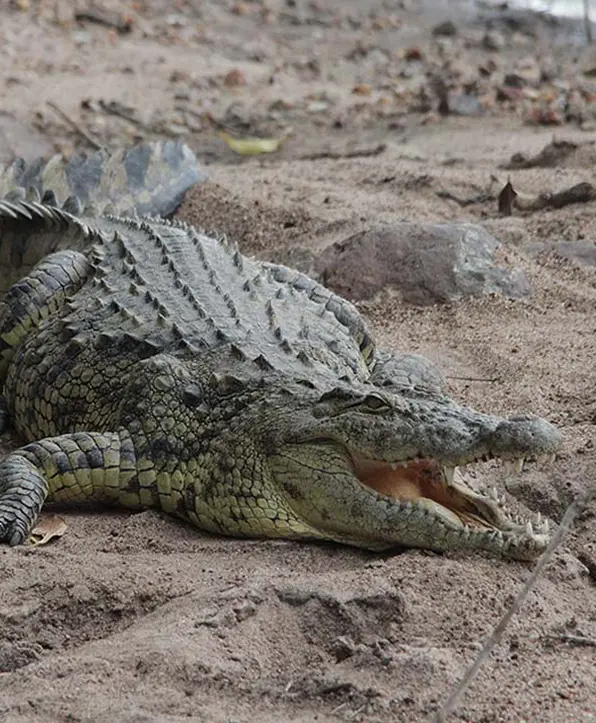



Northern Serengeti
Wedged between Seronera and Kenya’s Masai Mara, this area is seldom visited by tourists and is low on infrastructure and service. For those therefore that wish to avoid crowds, this is a region worth the effort to visit.
The landscape comprises the rolling grasslands synonymous with Serengeti, and the wildlife is just as abundant, with the migration passing through around June/July, and again from September to November. Dramatic scenes play out on the banks of the Mara River, as the herds make their perilous crossing.
The Lobo valley is home to a healthy population of predators, while giraffes, elephants, topi antelope and more criss-cross the landscape. The area is best visited in the dry season, as wildlife tends to disperse with the rains. Bologonja Springs and the nearby salt lick both attract a variety of species at this time.
Southern Serengeti
Between December and May, the vast mixed herd of wildebeest, zebra and antelope pauses in its relentless quest for grazing, and the calving season commences on the plains south of Seronera, to the border with the Ngorongoro Conservation Area.
Normally in February, the plains resonate with the bleating of thousands of newly born calves, who can walk within minutes and run with the herd within hours. They must strengthen quickly, as when the dry season descends, the mega herd will once again set off in search of grazing to the north.
Naturally, the abundance of young means that the predators are on hand, looking for an easy snack–and competition among them is fierce.
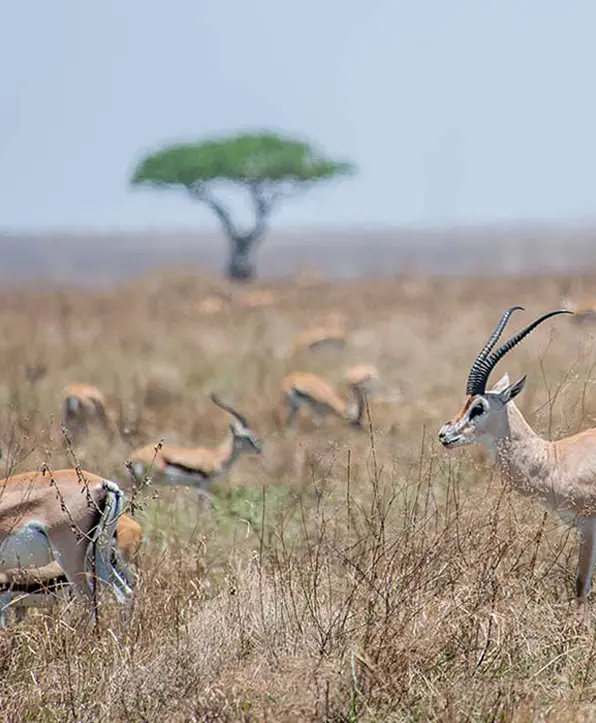

ACTIVITIES
Be one with the nature at the Serengeti.
An African Safari is all about viewing wildlife in its natural habitat – but it wouldn’t be complete without social occasions in scenic settings to share the highlights of your adventure.
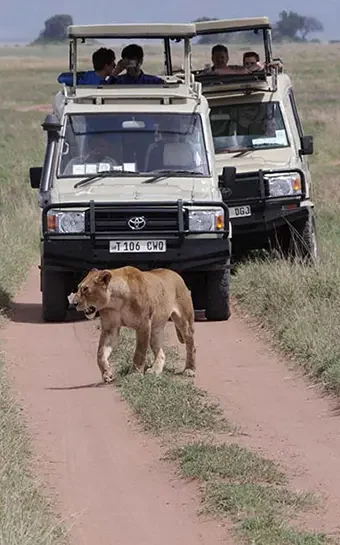
Game Drives
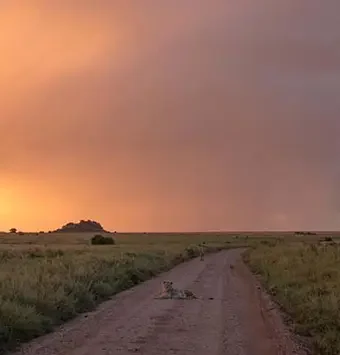
Night Game Drives
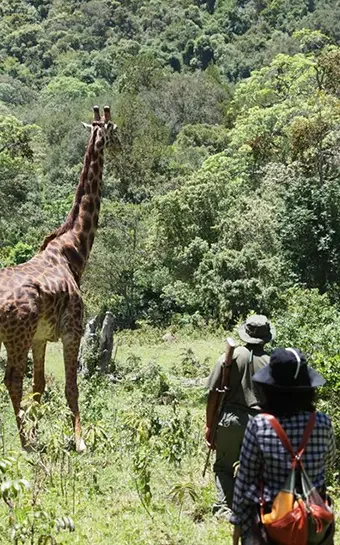
Walking Safari
Walking safaris are not permitted within the national park, but can be arranged in neighbouring wildlife areas.
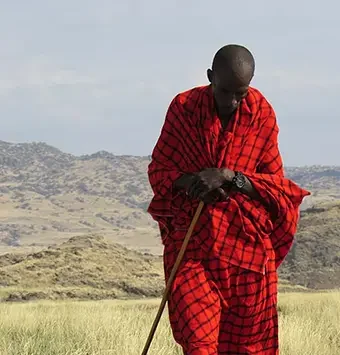
Maasai Cultural Experiences
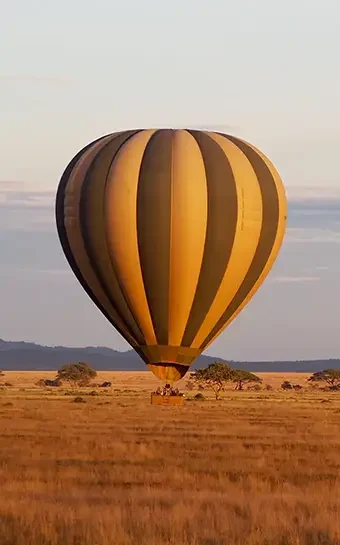
Hot-Air balloon trips
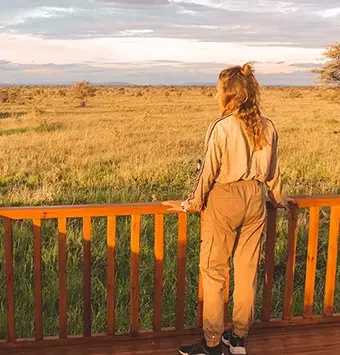
Holistic Practices
Some lodges offer wellness treatments and yoga classes.

Bird-watching
There are 542 recorded species, of which 11 are endemic. Migrant species are present from November to April.
EXPLORE
Our Tours
Wildlife, Landscapes, and Climate
Exploring the Splendors of Serengeti
The Great Migration is often called “The Greatest Show on Earth” with good reason. The second largest migration of large mammals on the planet comprises a mixed herd of over a million wildebeest, 400 000 zebras, and a variety of antelope such as eland and Thomson’s gazelle.
Outside of the migratory periods, the wildlife disperses to mix with other species of herbivores–such as kudu, impala, giraffe, topi, Cape buffalo, and warthogs, to name a few. In the rivers and water holes, hippos and crocodiles are abundant.
Primate species include olive baboons, vervet monkeys, and colobus monkeys. Other smaller mammals include aardvarks and porcupines – although these are seldom seen by day.
Large predators are especially abundant in the Serengeti. Lions and spotted hyenas vie with all other species as the apex predators of the plains. Being highly social predators gives them a distinct advantage over solitary predators such as cheetahs and leopards.
Cheetahs attempt to avoid competing with the social predators by hunting during the day, while leopards hoist their kills up into the high branches of trees to avoid confrontation. African hunting dogs were reintroduced to the reserve, but they are seldom seen within the Serengeti due to high lion and hyena numbers. Smaller predators such as African wildcat, serval, caracal, various mongoose and jackal species are all present in good numbers
Well over 500 species of birds have been recorded in the Serengeti, ranging from waterfowl that frequent the rivers, waterholes and marshes, to seed-eaters, and an amazing diversity of birds of prey. The skies are often filled with circling vultures, constantly on the lookout for carcasses from which to scavenge.
The iconic impression of the Serengeti National Park entails vast, nutritious grassland plains, commonly referred to as the savanna. Here and there, sparse woodlands occur, where the ubiquitous umbrella thorn tree–with its flat canopy–stands out among the larger tree species. This is true of the Seronera, eastern and southern plains. To the north, the terrain is made up of many rocky hills, especially concentrations of granite outcrops, known as kopjes. The Western Corridor and Grumeti area are marked by numerous valleys with seasonal water courses supporting thickets and forest habitat, in addition to patches of savanna grassland.
Month to Month Average Temperatures
The overall climate is generally moderate, seldom getting excessively hot, although the evenings and early mornings can be cold (Remember to pack warm clothing). The ‘short rains’ fall from November to December and generally don’t interfere with game viewing activities. The ‘long rains’ from March to May are substantial and may impact game viewing.
Best Time To Go
When to Visit for the Best Experience
June to October
Dry season
The Dry Season in the Serengeti runs from June to October. The sparse vegetation at this time assists with game viewing, and it is considered the best time to visit. Rain is not expected, but may amount to brief afternoon showers.
January to May
Wet season
The calving season on the southern plains peaks from late January through February–and your chances of witnessing predation are highest, if not for the faint-hearted.
January To February
High Season
The high tourist season runs from July until March, and you can expect the Seronera area to be crowded and accommodation at a premium.
April to May
Low Season
The low season over April and May means fewer tourists and some camps may offer discounted rates. This coincides with the rains that fall from March to May. These “long rains” may affect access to some areas of the reserve.

